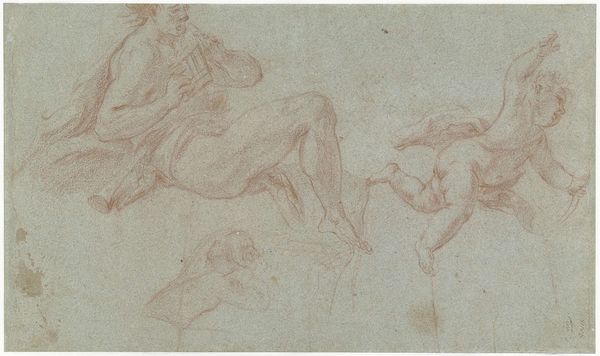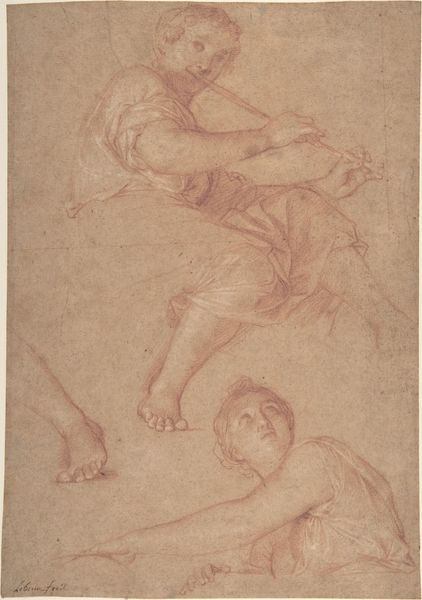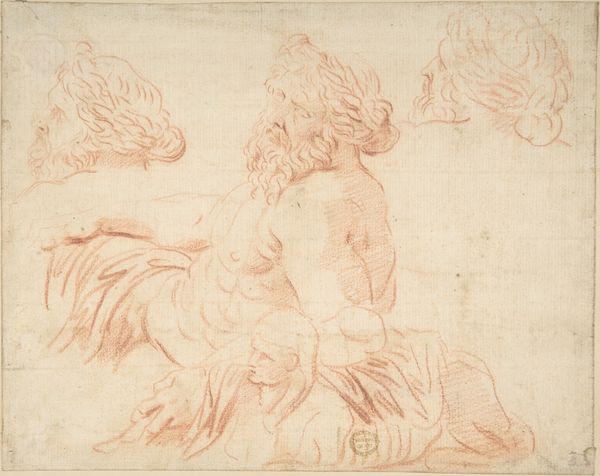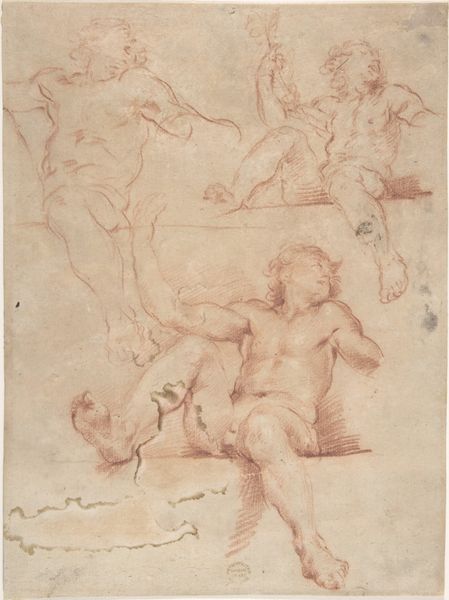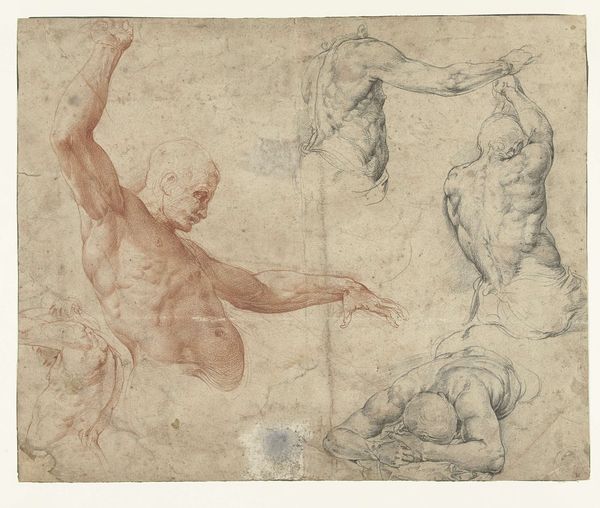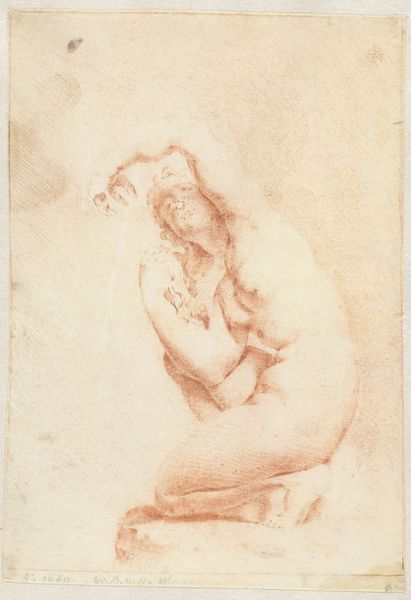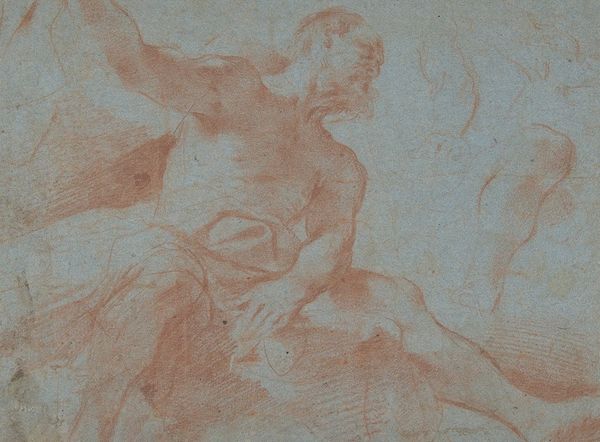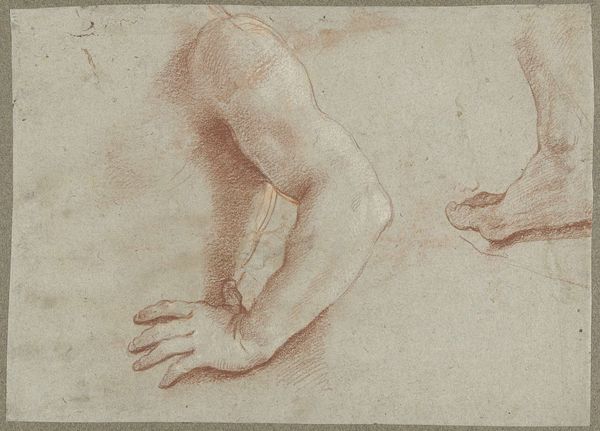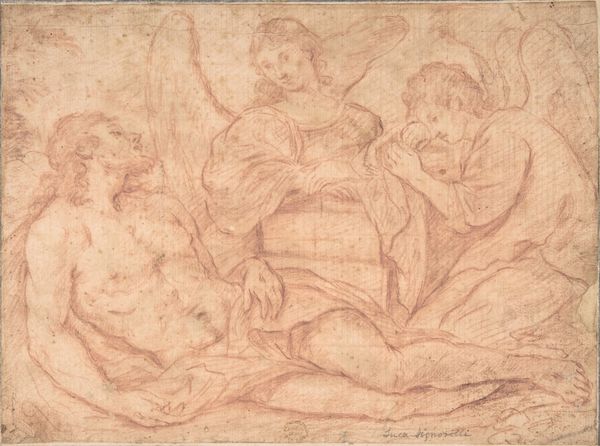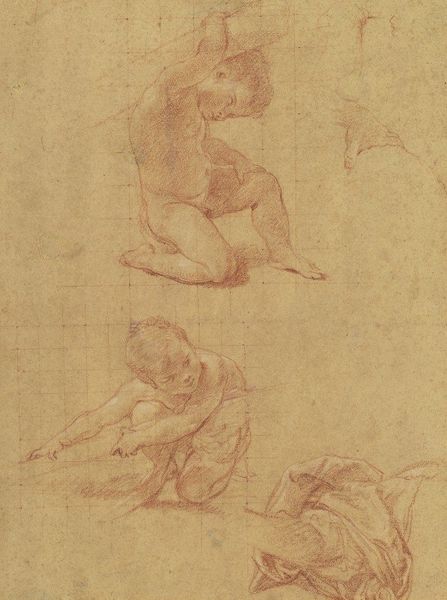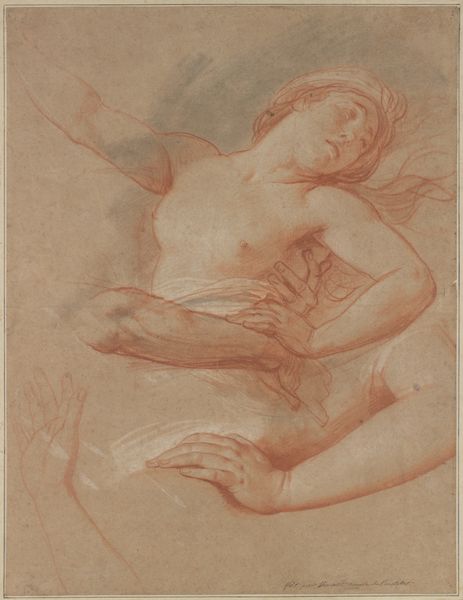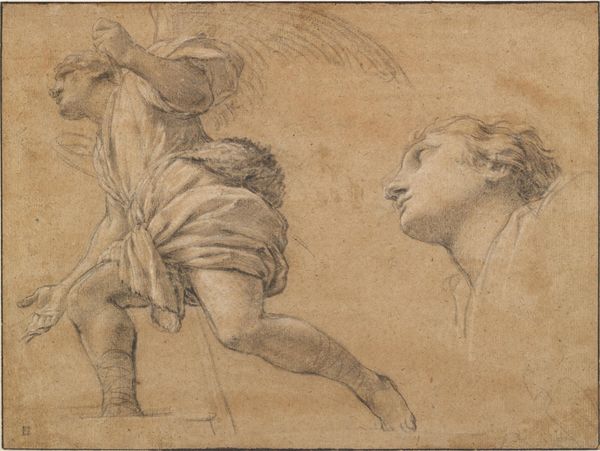
drawing, pencil, charcoal
#
portrait
#
drawing
#
charcoal drawing
#
figuration
#
11_renaissance
#
pencil
#
portrait drawing
#
charcoal
#
italian-renaissance
#
nude
Copyright: Public Domain: Artvee
Curator: This drawing, "Studies of a Seated Female, Child’s Head, and Three Studies of a Baby," is thought to be from around 1507 to 1508, placing it firmly in Raphael's early Florentine period. He used pencil and charcoal, I believe. What’s your first take on it? Editor: Delicate, certainly. But also revealing in its… sketchiness. It lacks the refined finish we associate with High Renaissance art. You see the labor, the underdrawing—the material process itself is very evident. Curator: Precisely! For me, it feels intimate, like sneaking a peek into Raphael’s mind as he explores form and emotion. He's really working through something here, trying to capture fleeting impressions, a mother's tender gaze, a baby’s movement. It almost feels sacred in its humanness. Editor: I’m drawn to how these "studies" highlight artistic production. Drawing wasn’t just preparation; it was integral to Raphael’s output and workshops. The materials used — paper, charcoal, pencil — speak to broader issues of production, patronage and dissemination of images at the time. These sketches are a tangible result of craft work! Curator: A workshop definitely provided labor to meet demands... But still, I look at that large, almost floating baby’s head and can’t help but feel something mystical in the air. There’s a palpable yearning for the ideal form, a drive toward perfect beauty. Editor: But that ‘yearning’ comes through labor, through a material relationship with the tools and the subject, wouldn’t you agree? There is nothing mystical without the very un-mystical economic relations underpinning Raphael's practice. Curator: Perhaps... It strikes me, looking at these soft, gentle lines, the ways in which he plays with light and shadow... This isn’t just about bodies; it’s about love, vulnerability, connection, isn't it? Editor: Love, sure—in the cultural and social context that values family as an organizing force! These bodies symbolize the material conditions of labor in early 16th century workshops. They show the business and practice. Curator: Well, you've certainly provided a fresh context, reminding me that Raphael’s art exists within a specific framework of patronage and production. A useful, if somewhat pragmatic view to be reminded of. Editor: Likewise, thinking of this piece as a field for yearning brings me closer to the mind of its creator.
Comments
No comments
Be the first to comment and join the conversation on the ultimate creative platform.

